Okinawan cuisine, hailing from Japan's southernmost islands, is a culinary treasure trove steeped in history and culture. Known for its emphasis on fresh, locally sourced ingredients and healthful preparations, Okinawan dishes offer a unique fusion of influences from Japan, China, and Southeast Asia. From the iconic goya champuru, a stir-fry featuring bitter melon, tofu, and pork, to the vibrant and nutritious seaweed-based dishes, Okinawan cuisine delights the palate with its bold flavors and vibrant colors. With a focus on longevity and wellness, Okinawan cuisine showcases the island's bounty of ingredients while providing a delicious and nourishing culinary experience.
Okonomiyaki
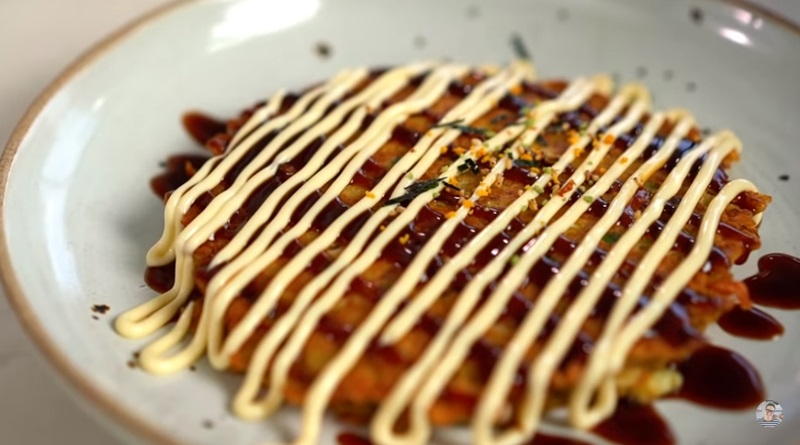
Okonomiyaki is a savory pancake made with a batter of flour, grated mountain yam, eggs, and shredded cabbage. However, unlike its Japanese counterpart, Okinawan Okonomiyaki is known for its distinct toppings. The toppings for Okonomiyaki vary, but some popular choices include thinly sliced pork belly, squid, shrimp, and green onions. Once the batter is cooked on a hot griddle, the toppings are added and then covered with a special Okonomiyaki sauce, mayonnaise, and bonito flakes. The result is a mouthwatering combination of flavors and textures. Okinawan Okonomiyaki is not only delicious but also a filling and satisfying dish. It showcases the region's use of fresh ingredients, such as local seafood and vegetables.
Awamori
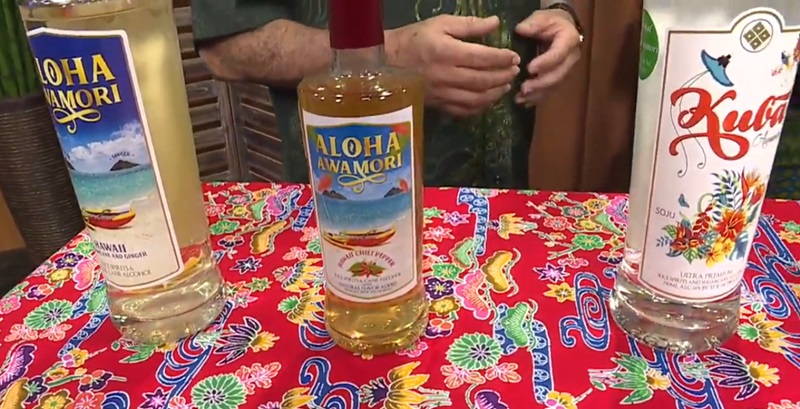
Awamori, an indigenous alcoholic beverage exclusive to Okinawa, Japan, stands apart with its unique production process. Distilled from long-grain indica rice, it distinguishes itself from brewed beverages like sake, undergoing a meticulous distillation similar to shōchū. While local rice production falls short of the rising demand, Thailand's indica rice is often utilized. Typically boasting 60–86 proof, with variations reaching 120 proof, Awamori undergoes aging in traditional clay pots, enhancing its flavor and mellowness. It represents a distinctive facet of Okinawan culture and craftsmanship in the realm of spirits.
Mimigaa
-1703151613.jpg)
Pig's ear, a unique and popular dish in Okinawan cuisine, is a delicacy that showcases the region's culinary traditions. Known as "mimiga" in Okinawa, this dish highlights the island's resourcefulness in utilizing every part of the pig. Prepared by thoroughly cleaning and boiling pig's ears, they are then thinly sliced and marinated in a mixture of soy sauce, vinegar, ginger, and various spices. The marination process infuses the ears with a tangy and savory flavor, adding a unique twist to the otherwise chewy texture. Once marinated, the pig's ear slices are typically pan-fried or grilled to achieve a crispy exterior while retaining their tender and juicy interior. This cooking method ensures a delightful contrast in textures, making it an enjoyable eating experience. In Okinawan cuisine, pig's ear is commonly served as an appetizer or side dish. It is often garnished with green onions or sesame seeds to enhance its presentation and flavor.
Taco rice

Taco Rice, a beloved dish in Okinawa, Japan, is a fusion delight that melds traditional Okinawan flavors with Western influences. It features seasoned ground meat, often beef or pork, served on a bed of rice and topped with a medley of fresh ingredients such as lettuce, tomatoes, cheese, and salsa. The dish is a harmonious blend of textures and tastes, showcasing Okinawa's culinary creativity. Taco Rice has become a local favorite and a symbol of Okinawa's unique food culture, offering a delicious cross-cultural experience for locals and visitors alike.
Chanpurū
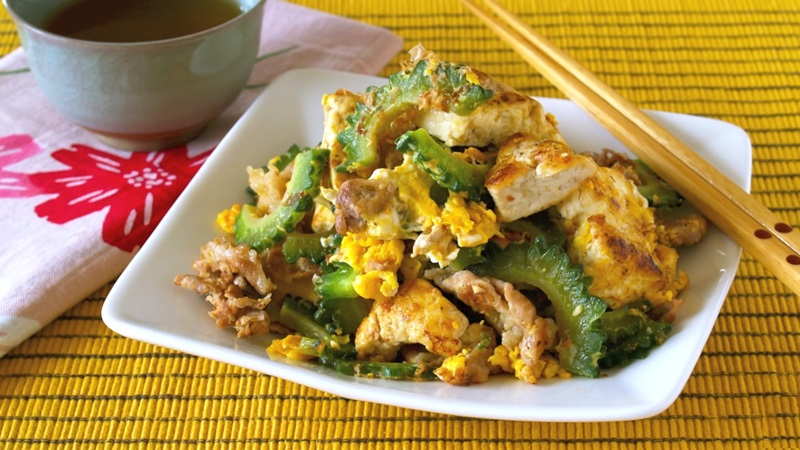
Chanpurū, a quintessential dish in Okinawan cuisine, stands as a symbol of the region's culinary identity. A stir-fry medley, Chanpurū typically combines tofu with various ingredients like vegetables, meat, or fish. Noteworthy additions include luncheon meat, egg, moyashi (bean sprouts), and gōyā (bitter melon). Spam, introduced by the US Navy, is a unique element, rarely used in mainland Japan. The term "Chanpurū," meaning "something mixed," extends beyond cuisine, symbolizing Okinawa's diverse cultural blend—melding traditional Okinawan, Chinese, Japanese, Southeast Asian, and North American influences. The word finds its roots in the Malay and Indonesian term "campur," signifying "mix."
Zosui
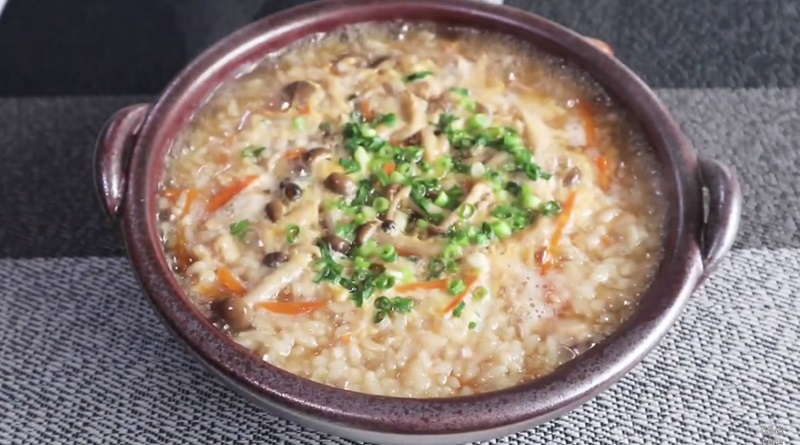
Zosui, a comforting Japanese rice soup, embodies warmth and simplicity. Often prepared as a wholesome remedy or after a celebratory meal, it combines cooked rice with vegetables, proteins like chicken or seafood, and seasoned with soy sauce and mirin. The ingredients simmer in a savory broth until melded into a hearty, porridge-like consistency. Zosui's versatility allows for personalization, with variations across regions and households. Beyond nourishing the body, Zosui holds cultural significance, offering a soothing and communal experience in Japan, especially during colder seasons or when seeking solace in a bowl of flavorful, home-cooked goodness.
Okinawa soba
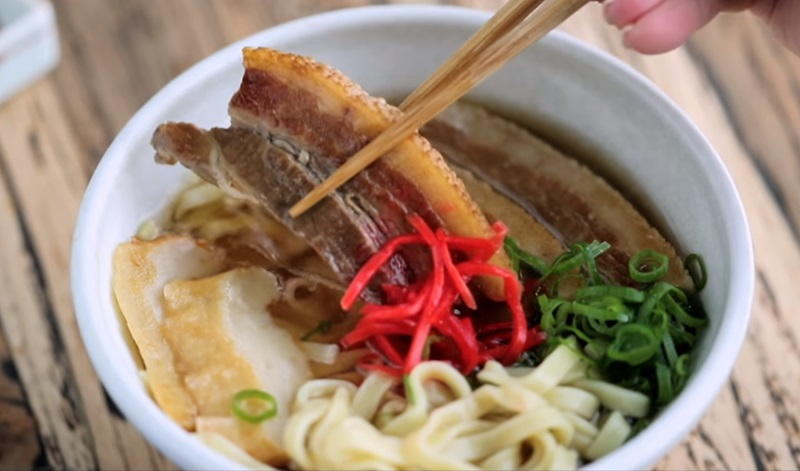
One of the most famous dishes in Okinawa is Okinawa soba, a traditional noodle dish that has become a staple of the local diet. Okinawa soba is made with thick wheat noodles that are typically served in a rich pork-based broth. The broth is simmered for hours to develop its deep and savory flavor. The noodles are cooked until they are firm and chewy, giving them a unique texture that sets them apart from other types of soba noodles. The dish is typically garnished with various toppings such as tender slices of pork belly, green onions, pickled ginger, and red ginger. It is often served with a side of pickled vegetables and a sprinkle of dried bonito flakes for an additional burst of umami flavor. Okinawa soba is a comforting and hearty dish that is enjoyed by locals and visitors alike. Its rich flavors and satisfying textures make it a beloved dish in Okinawan cuisine.
Muchi
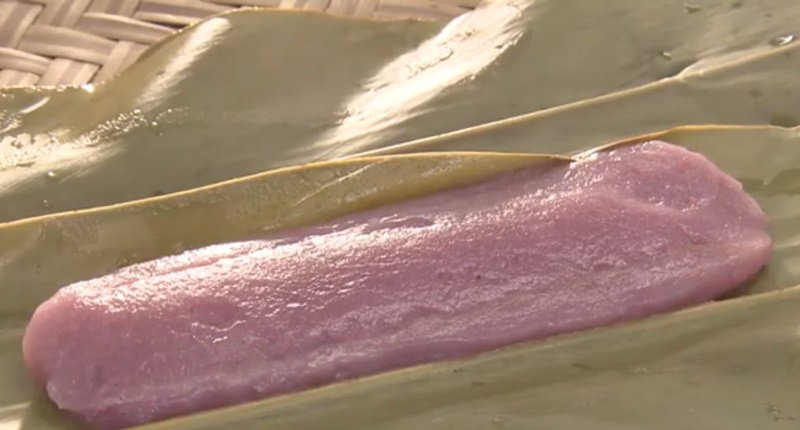
'Mochi,' a beloved Japanese delicacy, is a unique sweet rice cake celebrated for its exquisite texture and cultural significance. It is quite popular in the Okinawa Prefecture. Crafted from glutinous rice, meticulously pounded until it attains a smooth, elastic consistency, 'mochi' embodies a perfect blend of chewiness and sweetness. Often filled with sweet red bean paste, the delicate balance of flavors elevates this treat to culinary artistry. Beyond its gastronomic appeal, 'mochi' holds cultural importance in Japan, symbolizing good fortune and unity. Traditionally enjoyed during festive occasions and ceremonies, its preparation involves a labor-intensive pounding process, showcasing the precision and craftsmanship involved. In modern times, 'mochi' has diversified with various fillings and flavors, making it a versatile and cherished part of Japanese culinary heritage, bridging the past and present with each delightful, chewy bite.
Soki
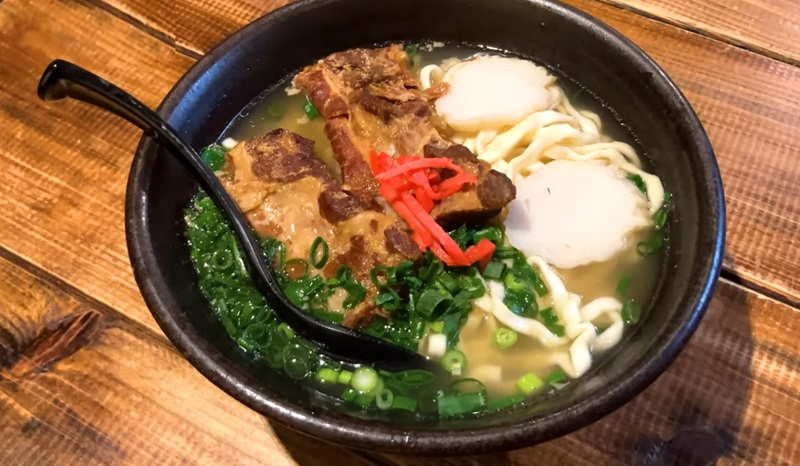
Soki is a hearty and savory pork dish that features tender and succulent chunks of pork ribs simmered in a flavorful broth. The dish gets its name from the Okinawan word "soki," which means ribs. The pork ribs are first marinated in a mixture of soy sauce, mirin, ginger, and garlic, which imparts a delightful umami flavor. They are then slowly cooked in a broth made from dashi, a traditional Japanese stock, along with soy sauce, brown sugar, and other seasonings. The result is a dish that showcases the melt-in-your-mouth tenderness of the pork, balanced with the robust flavors of the broth. Soki Dish is often served with a side of rice and garnished with green onions or seaweed. This traditional Okinawan delicacy is not only delicious but also reflects the island's cultural and historical connections to its neighboring regions.
Rafute
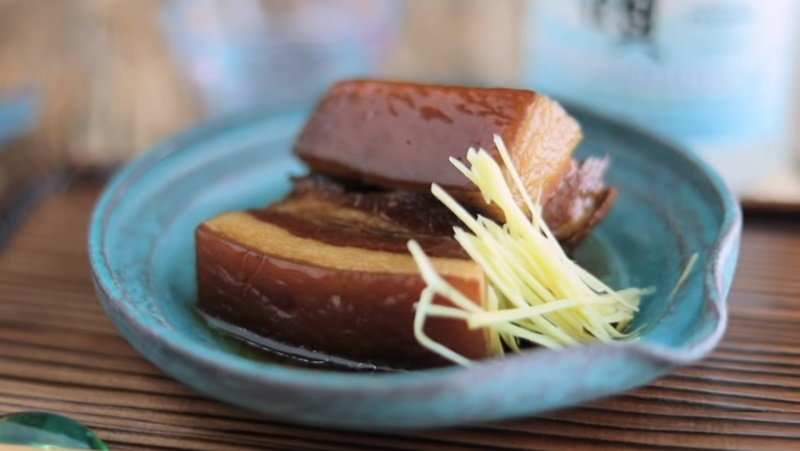
Rafute is a traditional Okinawan dish that showcases the unique flavors and cooking techniques of the region. It is a pork belly dish that is slow-cooked to perfection, resulting in tender, melt-in-your-mouth meat that is packed with flavor. The preparation of Rafute begins by marinating the pork belly in a mixture of soy sauce, sugar, and other seasonings for several hours or even overnight. The marinated pork belly is then cooked slowly in a simmering liquid that consists of soy sauce, sake, sugar, and sometimes other ingredients like ginger and garlic. The slow cooking process allows the pork belly to become incredibly tender, while the simmering liquid infuses it with a rich, savory, and slightly sweet flavor. The result is a dish that is both succulent and flavorful. Rafute is often served with a side of pickled vegetables, rice, and sometimes a sprinkling of green onions for added freshness.
Chinsukō
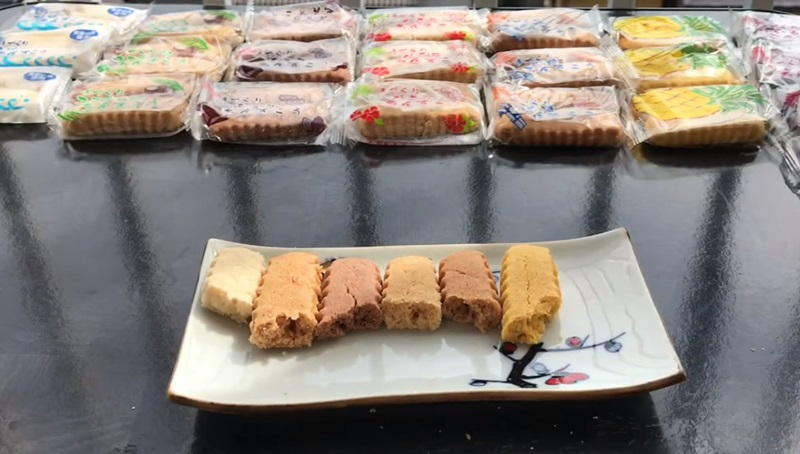
Chinsukō is a traditional Okinawan sweet dish that is highly popular and unique to the Okinawan cuisine. This delectable treat is made from a combination of flour, sugar, and lard, resulting in a melt-in-your-mouth texture that is both crunchy and crumbly. Chinsukō is often shaped into small, bite-sized biscuits that are perfect for snacking. The origins of Chinsukō can be traced back to the Ryukyu Kingdom era, where it was initially created as a long-lasting food item for sailors during long voyages. The ingredients used in Chinsukō were carefully chosen to withstand the harsh conditions at sea, making it an ideal source of sustenance. Despite its humble beginnings, Chinsukō has evolved into a beloved dessert in Okinawan culture. It is commonly enjoyed with a cup of tea or as a sweet treat after a meal. Chinsukō biscuits are available in various flavors, including traditional plain, black sugar, and even matcha green tea.
Kōrēgusu
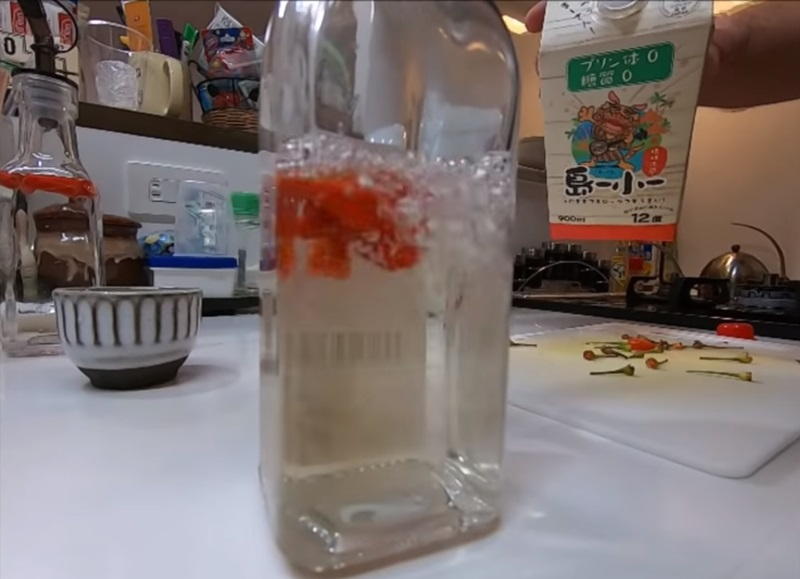
Kōrēgusu is a popular condiment in Okinawan cuisine, known for its fiery and flavorful taste. It is made by infusing chili peppers with a variety of ingredients to create a unique and spicy blend. The dish originated from the Ryukyu Kingdom and has become an essential component of Okinawan cuisine. The key ingredient in Kōrēgusu is the locally grown chili pepper called goya, which is known for its intense heat. The goya peppers are combined with other ingredients such as garlic, ginger, turmeric, and sometimes even fish or shrimp to add depth of flavor. These ingredients are then fermented together for a period of time, allowing the flavors to meld and develop. Kōrēgusu is often used as a condiment or dipping sauce for various dishes in Okinawan cuisine. It adds a spicy kick and a burst of flavor to dishes such as tofu, stir-fries, soups, and even grilled meats.
Turmeric tea
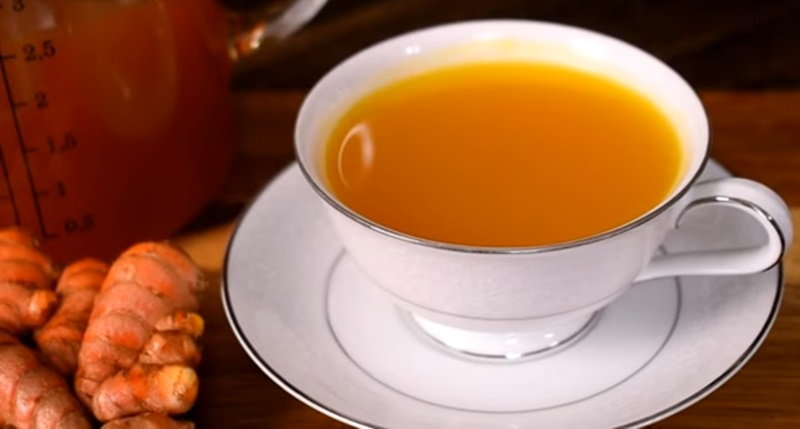
Okinawan cuisine is renowned for its vibrant and wholesome dishes that contribute to the longevity of the people living in this region of Japan. Turmeric tea is a delightful beverage that offers numerous health benefits. Turmeric tea is made by infusing hot water with fresh turmeric root, a bright orange-yellow spice known for its anti-inflammatory and antioxidant properties. The root is peeled and grated before being steeped in boiling water, resulting in a warm, aromatic tea that is both soothing and invigorating. This refreshing beverage is commonly enjoyed in Okinawa due to its potential health benefits. Turmeric is believed to have anti-aging properties, aid digestion, boost the immune system, and reduce inflammation. It is also rich in curcumin, a powerful compound known for its potential cancer-fighting properties.
Miki
-1703158308.jpg)
Miki, hailing from Amami Oshima, Kagoshima Prefecture, and Okinawa Prefecture in Japan, is a distinctive beverage associated with health and longevity. Derived from omiki, a traditional Shinto ritual drink, Miki is a fermented concoction made from rice, sweet potatoes, and sugar. Once a household staple, it's now commercially available as a soft drink in specialized shops and grocery stores. The texture resembles sweet porridge due to fermented rice, while sweet potatoes in Amami and barley in Okinawa contribute unique regional flavors. Store-bought Miki exudes a sweet potato porridge essence with a thick, sweet, and slightly sour profile, often likened to yogurt. Best consumed chilled, Miki can be mixed with various beverages or used in desserts, showcasing its versatility and cultural significance. Its optimal shelf life is around 10 days, and as it ferments, some prefer it at a certain level of sourness.
Kippan
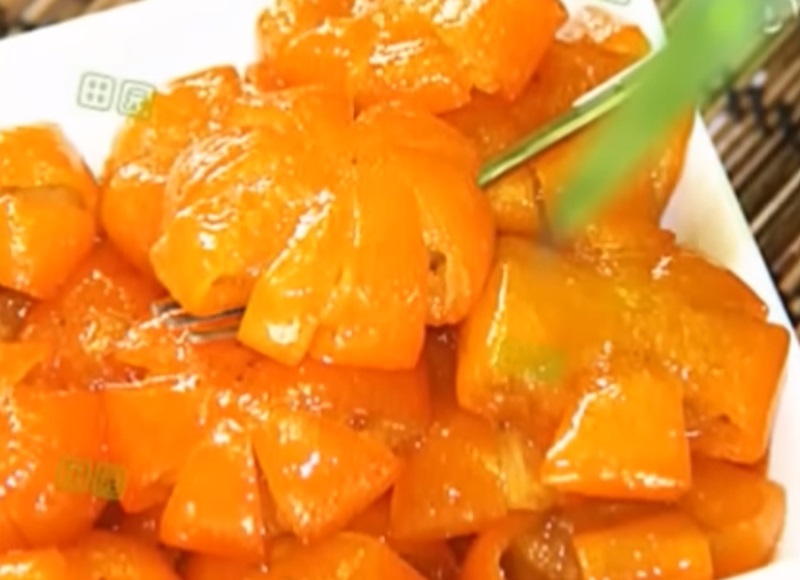
Kippan, also known as chippan, stands as a unique and cherished Okinawan confection. Handcrafted with precision, each piece is meticulously made from lightly peeled kunibu or kunenbo, along with the distinctive kaabuchī citrus sourced from Yanbaru. These ingredients are simmered with sugar for several hours, then delicately coated in liquid sugar, sometimes adorned with additional toppings like matcha. The intricate process unfolds over several days, showcasing the dedication to preserving tradition. Originating from the time of the Ryūkyū Kingdom, Kippan were introduced from Fuzhou around three centuries ago, initially served to esteemed visitors from the Imperial Chinese Missions. Today, this exclusive delicacy is meticulously crafted by a sixth-generation purveyor in Naha, recognized as an integral element of Japan Heritage, symbolizing the enduring legacy of Traditional Ryūkyūan Cuisine, Awamori, and Performing Arts of Okinawa since the Ryūkyū Kingdom era.


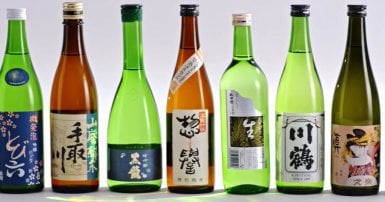
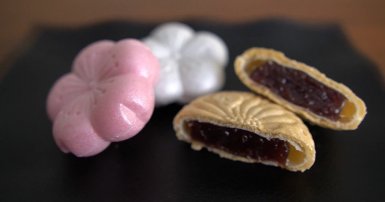
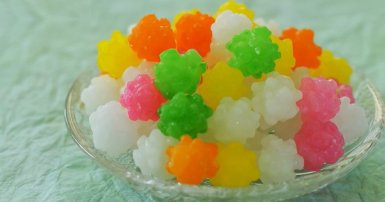
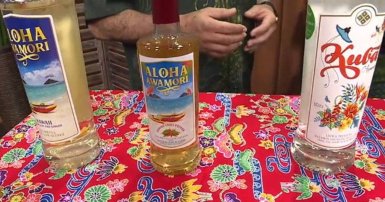
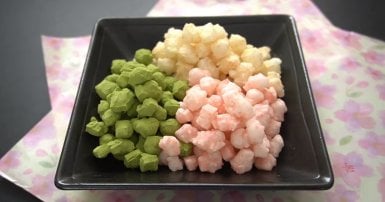
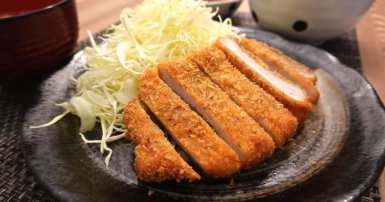
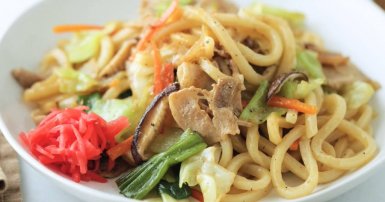
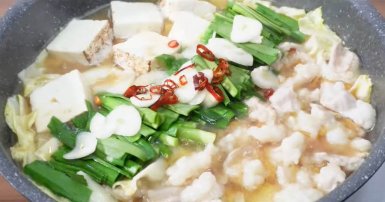

-1709813013.jpg)


